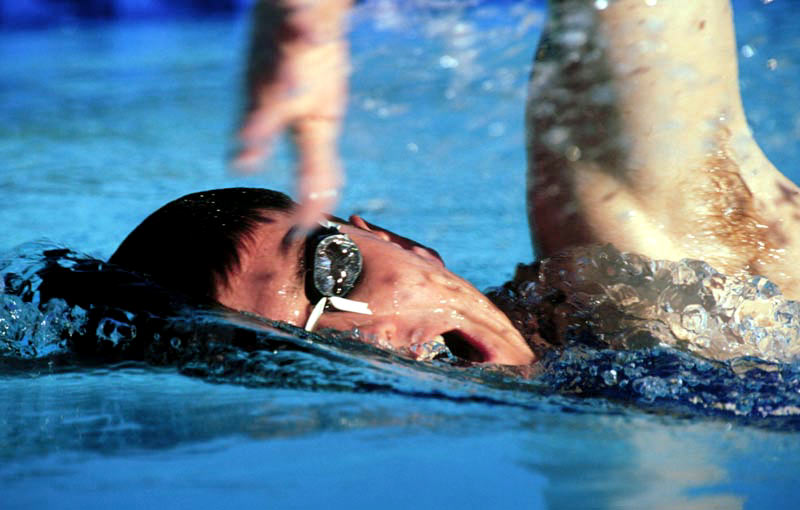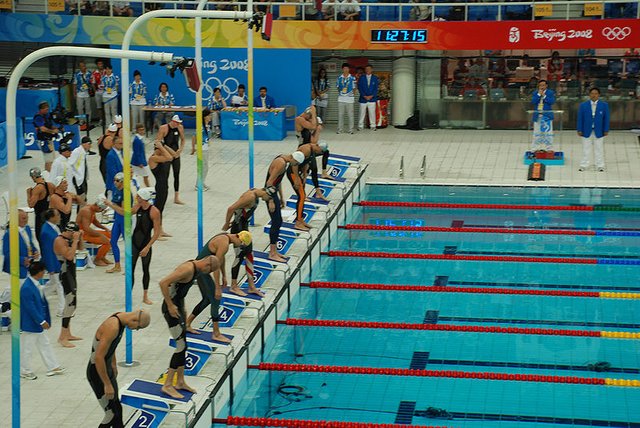THE SCIENCE OF SWIMMING
Swimming is an individual or team sport that uses arms and legs to move the body through water. The sport takes place in pools or open water. Swimming is also the self propulsion of a person through fresh or salt water, usually for recreation, sport, exercise or survival. Locomotions is achieved through coordinated movement of the limbs, the body or both. 
Swimming relies on the natural buoyancy of the human body. On average, the body has a relative density of 0.98 compared to water, which causes the body to float. Since the human body is only slightly less dense than water, water supports the weight of the body during swimming. As a result, swimming is " low impact " compared to land activities such as running.
Hydrodynamics is important to stroke technique for swimming faster, and swimmers who want to swim faster or tire less try to reduce the drag of the body's motion through the water. To be more hydrodynamic, swimmers can either increase the power of their strokes or reduce water resistance, though power must increase by a factor of three to achieve the same effect as reducing resistance. Efficient swimming by reducing water resistance involves a horizontal water position, rolling the body to reduce the breadth of the body in the water, and extending the arms as far as possible to reduce wave resistance.
Just before plunging into the pool, swimmers may perform exercises such as squatting. Squatting helps in enhancing a swimmer’s start by warming up the thigh muscles.
Reference : google